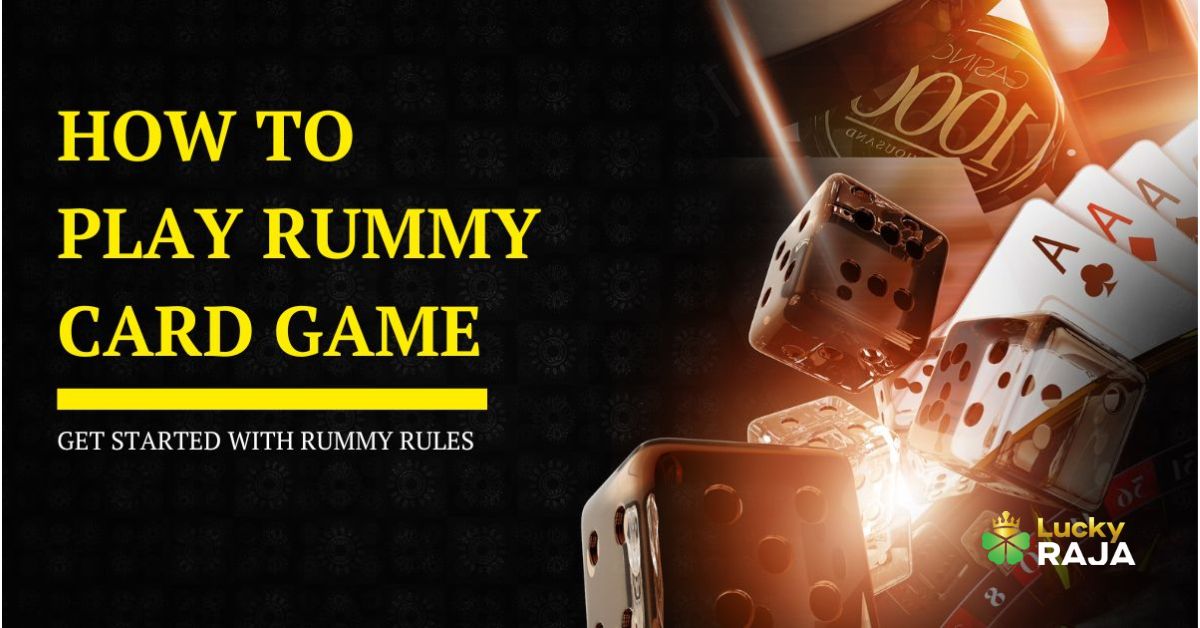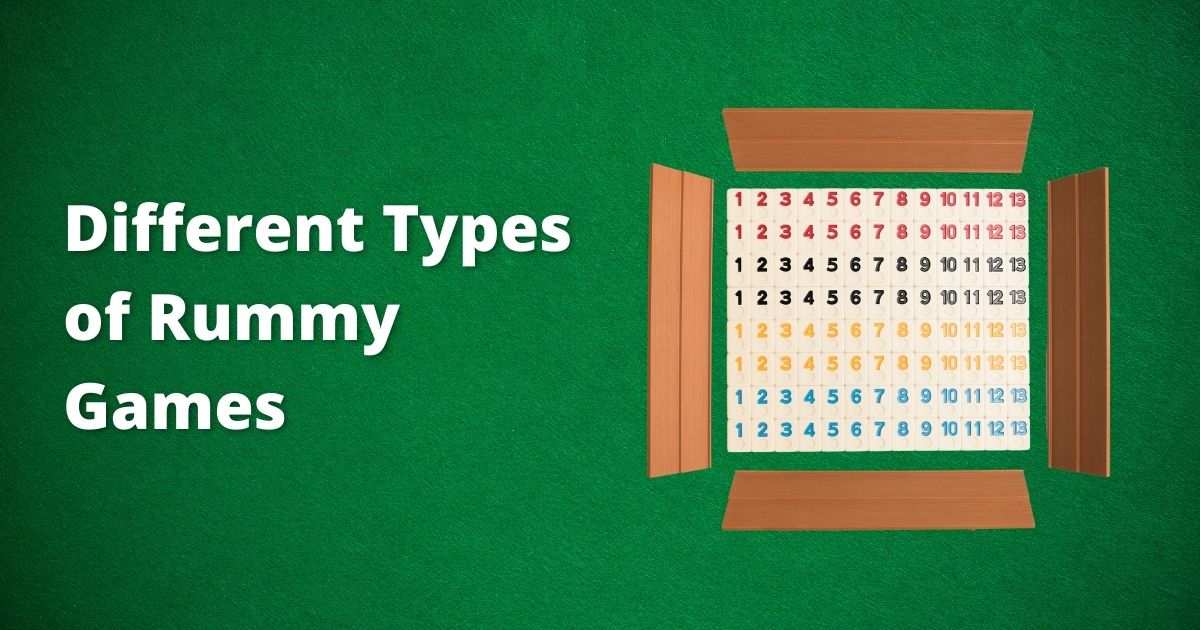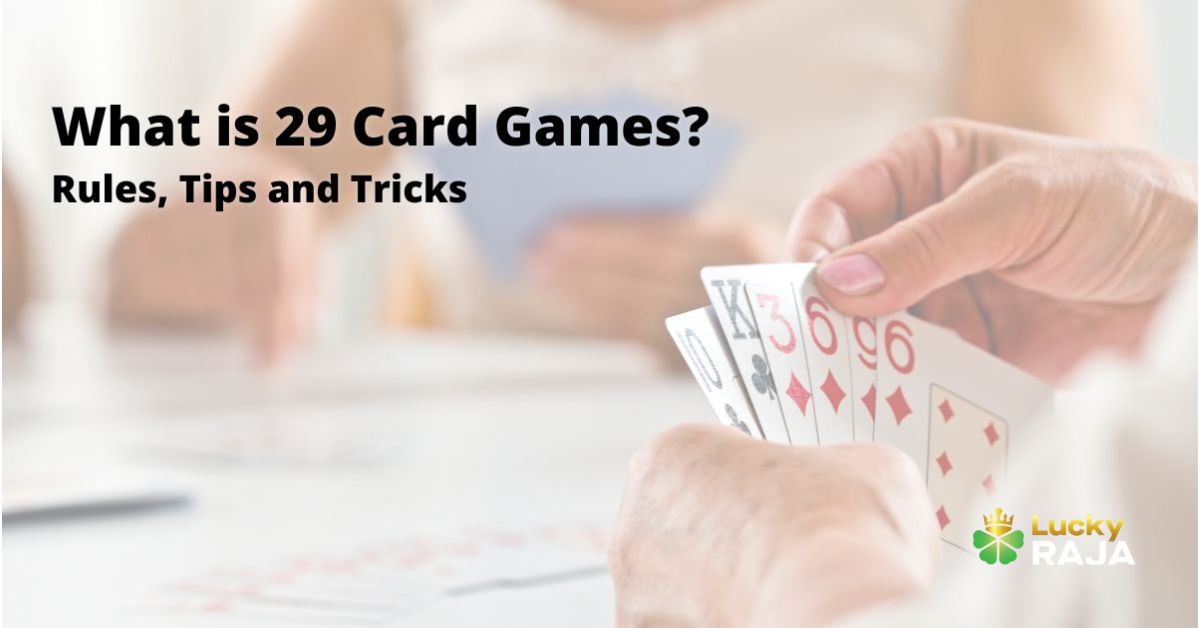Rummy is a fun and exciting card game played by millions of people. It is a mix of skill, strategy, and a little bit of luck. Whether you are new to the game or already know a little about it, learning the rules properly will help you play better and enjoy it more. This guide will explain everything in simple terms so you can easily understand and start playing
The main goal of Rummy is to arrange all 13 cards in your hand into valid groups called sets and sequences. To win, you must have at least two sequences, and one of them must be a pure sequence. The remaining cards can be arranged in any valid sets or sequences.
Think of it like solving a puzzle—your job is to group the cards correctly before your opponents do
Following are the steps on how to play rummy:-
-
Rummy is played with 2 to 6 players using one or two decks (each with 52 cards + Jokers).
-
Each player is dealt 13 cards.
-
A random card is chosen as the wild card Joker for the game.
-
The remaining deck is placed face-down to form a draw pile.
-
The first card from the draw pile is placed face-up to start the discard pile.
Each turn consists of three steps:
-
Draw a card – Pick one card from either the draw pile or the discard pile.
-
Sort your cards – Arrange your cards into possible sequences and sets.
-
Discard a card – Drop one card into the discard pile to end your turn.
-
You must create at least two sequences, and one of them must be pure.
-
Use Jokers wisely to complete impure sequences and sets.
-
Avoid holding high-value cards for too long, as they add to your points if you lose.
-
When you have arranged all your cards into valid sequences and sets, you can declare your hand.
-
Double-check to ensure you have at least one pure sequence, or your declaration will be invalid.
-
If your declaration is correct, you win the game, and the losing players get penalty points.
-
The winner gets 0 points.
-
The losing players get points based on the value of their ungrouped cards.
-
The maximum penalty is 80 points per player.
A sequence in rummy is a group of three or more cards of the same suit arranged in consecutive order. There are two types of sequences: pure sequences and impure sequences.
A pure sequence is a group of three or more cards of the same suit arranged in consecutive order without using any Jokers.
Here are a few examples of pure sequences:
- 5♥ 6♥ 7♥: This is a pure sequence with three cards of hearts in consecutive order.
- 3♠ 4♠ 5♠ 6♠: This is a pure sequence with four cards of spades in consecutive order.
An impure sequence is a group of three or more cards of the same suit arranged consecutively, but with the help of one or more Joker cards to fill in the gaps.
Here are some examples of impure sequences:
- 6♦ 7♦ Q♠ 9♦: Here, the Queen of spades (Q♠) is used as a wild Joker to represent the missing 8♦, forming an impure sequence of diamonds.
- 5♠ Q♥ 7♠ 8♠ PJ: In this example, the Queen of hearts (Q♥) acts as a wild Joker replacing the 6♠, and the printed Joker (PJ) replaces the 9♠ to complete the impure sequence of spades.
A set in rummy consists of three or more cards of the same rank but different suits. You are allowed to use wild cards and Jokers when forming sets.
Let's illustrate with some examples of valid sets:
- A♥ A♣ A♦: This set comprises three Aces, each from a different suit.
- 8♦ 8♣ 8♠ 8♥: This set consists of all four 8s from each suit.
- 9♦ Q♠ 9♠ 9♥: In this case, the Queen of spades (Q♠) acts as a wild Joker substituting for the 9♣, creating a valid set.
- 5♦ 5♣ 5♠ PJ: The printed Joker (PJ) takes the place of the 5♥, completing the set of 5s.
- 5♦ 5♣ Q♠ PJ: Here, we see both a wild Joker (Q♠ replacing 5♠) and a printed Joker (PJ replacing 5♥) used to form a set of 5s.
- 5♦ 5♣ PJ Q♥ Q♠: This example shows that a set can have more than four cards. The printed Joker (PJ) and the Queen of hearts (Q♥) act as wild Jokers replacing 5♠ and 5♥, while the Queen of spades (Q♠) is used as an additional card to complete a group of 13 cards for a valid declaration.
Typical Example: 2♥ 3♥ 4♥ 5♥ | 5♣ 6♣ 7♣ 8♣ | 5♦ 5♣ PJ Q♥ Q♠
In this example, you can see a pure sequence, an impure sequence, and a set of five cards used to group all 13 cards for a valid declaration.
Important Considerations:
- You cannot use two or more cards of the same suit in a set. This would make the declaration invalid.
- You can have more than four cards in a set, as demonstrated in example 6.
- Remember, you cannot have more than 13 cards in your hand at any time during the game.
By understanding how to form both sequences and sets, you'll be well on your way to mastering the game of rummy. Remember, a valid declaration requires at least one pure sequence and another sequence (pure or impure) along with any additional sets or sequences to make up a total of 13 cards.
Knowing the rules of rummy is essential, but playing strategically can significantly increase your chances of winning. Here are some valuable tips to enhance your gameplay and stay ahead of your opponents:
Forming a pure sequence should be your top priority at the beginning of the game. Remember, without a pure sequence, you cannot declare and win. Focus on creating this vital combination as early as possible.
High-value cards like Ace, Jack, Queen, and King can lead to a significant point burden if you lose the game. Try to discard them early on, especially if they are not contributing to a potential sequence or set. Consider replacing them with Jokers or Wild Cards to minimise your risk.
While it's tempting to pick cards from the discard pile to complete your sets or sequences, be cautious. Picking from the discard pile can give your opponents clues about your hand and strategy.
Certain cards, like the 7 of any suit, can be extremely versatile. For instance, a 7 can work with a 5 and 6 of the same suit to form a sequence, and also with an 8 and 9 of the same suit. Recognize and utilise such smart cards to create more potential combinations.
Jokers are powerful tools in rummy, allowing you to complete sets and impure sequences. Use them strategically to replace high-value cards or to fill gaps in your combinations. Remember, you cannot use Jokers to form a pure sequence.
Before hitting the declaration button, meticulously check your cards to ensure all your sets and sequences are valid. An invalid declaration can result in a loss, even if you were close to winning.
By implementing these quick tips into your gameplay, you can gain a competitive edge in rummy and improve your chances of emerging victorious. Remember, practice makes perfect, so keep playing and refining your strategies to become a true rummy champion.
As you delve deeper into the world of rummy, you'll encounter specific terms that are integral to understanding the game. Familiarising yourself with these terms will not only enhance your understanding of the game but also allow you to communicate effectively with fellow players.
Let's take a look at some common terms used in Indian Rummy:
Simply put, a rummy table is the virtual space where the game takes place. Each rummy table can accommodate a specific number of players, typically ranging from two to six, depending on the platform and the game variation.
In rummy, Jokers and WildCards serve the same purpose: they act as substitutes for any other card to help you form sets and impure sequences.
- Printed Joker: Each rummy deck comes with a Printed Joker.
- Wild Card: At the beginning of each game, a random card is selected as the Wild Card.
Remember, while Jokers are incredibly useful, they cannot be used to form a pure sequence.
In most rummy variations, you start with 13 cards. Throughout the game, you'll draw cards from either a closed deck (where you cannot see the cards) or the open deck (formed by discarded cards from other players). After drawing a card, you need to discard one card from your hand to maintain a total of 13 cards. This process of drawing and discarding continues until a player declares or the game ends.
The sorting of cards typically happens at the beginning of a game, especially in online rummy. This feature allows you to arrange your cards by suit or rank, making it easier to visualise potential sets and sequences. You can simply hit the "Sort" button to automatically arrange your cards and strategize your moves effectively.
A drop in rummy refers to a player's decision to leave the game before it reaches its natural conclusion.
- Initial Drop: If a player decides to drop out before playing their first turn, it is considered an initial drop and typically carries a lower penalty.
- Middle Drop: If a player chooses to drop out after playing at least one turn, it is termed a middle drop and often incurs a higher penalty than an initial drop.
The penalty points for dropping vary depending on the rummy variation and the specific rules of the game.
Cash tournaments, as the name suggests, are rummy tournaments where you play for real money. These tournaments come with predefined entry fees and offer substantial cash prizes to the winners.
Most online rummy platforms have a dedicated "Tournaments" section. Here you can browse through the available tournaments, select the type of tournament you'd like to participate in (e.g., Points Rummy, Pool Rummy, Deals Rummy), choose a tournament that fits your budget (entry fee), and join by clicking the "Join This Tournament" button. Make sure you understand the tournament rules and prize structure before joining.
In the heat of the game, you might be tempted to declare as soon as you think you have a winning hand. However, it's crucial to understand what constitutes a valid declaration in rummy. An invalid declaration occurs when a player presses the "Declare" button, but their cards do not meet the criteria for a winning hand, as per the rummy rules. Making an invalid declaration can be a costly mistake, as it typically results in a loss for the player who declared, and the opponent is automatically declared the winner.
Let's examine some common scenarios that lead to invalid declarations:
While a set can have three or more cards, it's essential to remember that a set must consist of cards of the same rank but from different suits. In this example, while the player has used a wild Joker (Queen of Hearts) as the fifth card, which is permissible, the presence of two 10 of Spades makes this an invalid set.
Similar to the previous example, this set contains two cards of the same suit (Kings of Hearts), making it an invalid set.
- Example 1: 10 10 10 10 | 5 5 5 | 6 6 6 | 9 9 Joker
To make a valid declaration, you need at least two sequences, one of which must be a pure sequence (without a Joker). In this example, the player has formed sets but no sequences, making it an invalid declaration.
- Example 2: K K K | 6 7 Joker | 9 10 J Joker | 5 5 5
This example highlights another common mistake. While the player has two sequences, both are impure sequences (using Jokers). A valid declaration requires at least one pure sequence.
- Example 3: Q Q Q | 6 7 8 9 | 5 5 5 | 10 10 10
In this scenario, the player has one pure sequence (6 7 8 9 ). However, a valid declaration necessitates a minimum of two sequences (one pure and one pure or impure).
To simplify the rules for a valid declaration, here's a handy chart:
|
Feature
|
Description
|
|
Number of Cards
|
13
|
|
Minimum Sequences Required
|
2 (One pure sequence, one can be pure or impure)
|
|
Pure Sequence
|
3 or more consecutive cards of the same suit (no Jokers allowed)
|
|
Impure Sequence
|
3 or more consecutive cards of the same suit (Jokers allowed)
|
|
Set
|
3 or 4 cards of the same rank from different suits (Jokers allowed)
|
|
Additional Groups
|
Remaining cards can be formed into any combination of valid sets or sequences
|
|
Example
|
5 6 7 (Pure Sequence) | 5 6 Q 8 (Impure Sequence) | 8 8 8 (Set) | 2 2 (Set) | K Q (Can be used to form other sets/sequences)
|
- Always have a pure sequence.
- Form at least one more sequence (pure or impure).
- Arrange the remaining cards in valid sets or sequences.
- Double-check your cards before declaring.
The beauty of rummy lies in its flexibility. There are numerous ways to combine your cards to achieve a valid declaration. The chart above provides just one example. Experiment with different combinations, learn from experienced players, and develop your unique playing style.
Understanding the points system is crucial in rummy, as it determines the winner and the amount of money won or lost, especially in cash games.
Here's a breakdown of how points are calculated:
|
Cards
|
Value
|
|
A, K, Q, J
|
10 points each
|
|
Joker and Wild Cards
|
0 points
|
|
Other cards
|
Face value (e.g., a 5 is worth 5 points)
|
The points of a losing player are calculated as follows:
- No Pure Sequence: If a player doesn't have a pure sequence, the value of all their cards is added, with a maximum cap of 80 points.
- Pure Sequence but Invalid Declaration: If a player has a pure sequence but makes an invalid declaration, they will incur a penalty of 80 points.
- Drop Points: The penalty for dropping varies based on when the player decides to drop out:
- First Drop: Usually 20 points.
- Middle Drop: Usually 40 points.
- Three Consecutive Misses: If a player fails to pick or discard a card for three consecutive turns, it's often considered a middle drop, resulting in a penalty of 40 points.
- Leaving the Table: If a player leaves the table after picking a card from the closed deck, it's typically considered a middle drop. If they haven't picked any card, it might be considered a first drop.
Let's illustrate how points are calculated with an example:
Scenario: A six-player game with the Queen of Diamonds (Q ) as the Wild Joker.
|
Player
|
Hand Formed
|
Points Calculated
|
|
Player 1
|
2 3 4 | 5 6 Q | 8 8 5 | 2 2 | K Q
|
45 points (K Q - unmatched cards)
|
|
Player 2
|
4 4 4 | 4 5 Q | 3 7 8 | Q K | 10 9
|
68 points (All cards counted as no pure sequence is formed)
|
|
Player 3
|
3 4 5 | 5 6 7 Q | 8 5 | 2 2 2 | K
|
23 points (K - unmatched card)
|
|
Player 4
|
A 4 5 | 5 6 10 J | 8 5 | 2 2 Q | K
|
20 points (First Drop penalty)
|
|
Player 5
|
4 4 4 | 4 5 Q | A 7 8 | Q K | J 9
|
40 points (Penalty for three consecutive misses)
|
|
Player 6
|
2 3 4 | 5 6 7 Q | 5 5 5 | 2 2 2
|
Winner (Forms a pure sequence (2 3 4 ) and another valid sequence (5 6 7 Q ) and the remaining cards are grouped into valid sets.)
|
In this example, Player 6 wins the game by meeting the rummy declaration criteria. The other players receive penalty points based on their hands and actions during the game.
Understanding how points are calculated is essential for making strategic decisions during the game. By minimising your potential losses and maximising your potential winnings, you can enhance your overall rummy experience.
When you play rummy cash games, the thrill of winning goes beyond just bragging rights—it translates into tangible rewards. Understanding how your winnings are calculated in different rummy variations is essential for managing your bankroll and maximising your profits.
Here's a breakdown of winning calculations in popular rummy cash game formats:
Points Rummy is a fast-paced format where each point is assigned a predetermined rupee value. The winner of each round collects the total points lost by all the other players, multiplied by the point value.
Winning Calculation: Winning Cash = (Sum of all points of opponents) X (Rupee value of the point) - Rummy platform Fee
Example: Let's say you're playing a six-player Points Rummy game on a table with a ₹860 entry fee. Each point is worth ₹4. You emerge victorious, with the other five players losing with the following points: 45, 78, 23, 20, and 40.
Calculation:
Your Winnings = (45 + 78 + 23 + 20 + 40) X ₹4 - Rummy Platform Fee
= 206 X ₹4 - Rummy Platform Fee
= ₹824 - Rummy Platform Fee
So, your winnings would be ₹824, minus the Rummy Platform fee, which is usually a small percentage of the winnings.
Pool Rummy is an exciting format where players pay a fixed entry fee that contributes to the prize pool. The last player remaining in the game after all others have been eliminated wins the entire prize pool.
Winning Calculation: Winnings = (Entry Fee) X (Number of Players) - Rummy Platform fees
Example: Imagine five players participating in a Pool Rummy game with a ₹50 entry fee.
Calculation:
Prize Pool = ₹50 X 5 = ₹250
The winner takes home the entire prize pool of ₹250, minus the Rummy Platform fees.
Deals Rummy, as the name suggests, is played for a predetermined number of deals. The player with the highest chip count at the end of the agreed-upon deals wins the game.
Winning Calculation: Winnings = Sum of points of all opponents (assuming each chip is equal to one point)
Example: Consider a six-player Deals Rummy game. You declare your hand, and the other five players have 10, 20, 30, 35, and 40 points, respectively.
Calculation: Your Winnings = 10 + 20 + 30 + 35 + 40 = 135 chips
Therefore, you would win 135 chips in this scenario. The value of each chip is determined by the stake of the game.
Understanding how winnings are calculated in different rummy formats empowers you to make informed decisions about your gameplay. By choosing the formats and stakes that align with your risk appetite and bankroll, you can maximise your chances of success in the exciting world of online rummy.








__1737554168-0.jpg)











